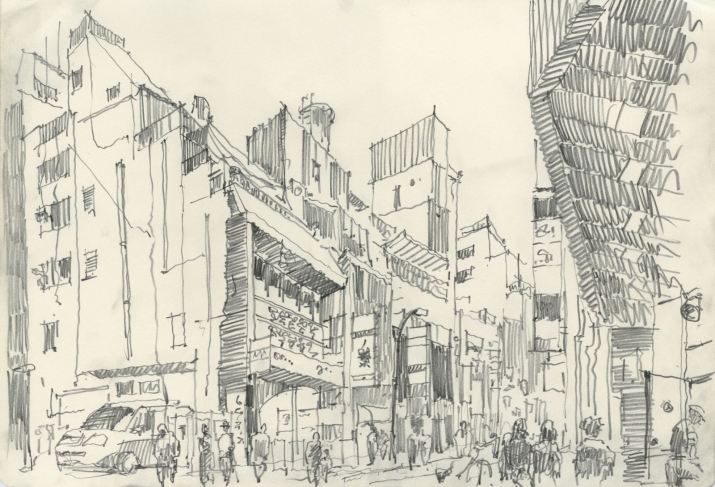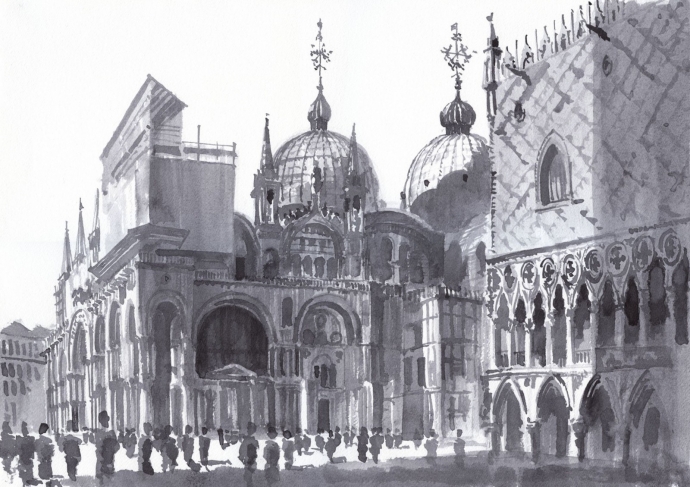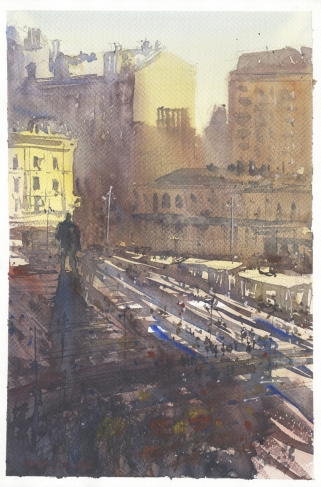Personal contact / Architectural graphics




Tokio. Paper, pencil, ink. 2009
Venice. San Marco. Paper, ink, brush. 2013. Award of Excellence of the International Competition of the American Society of Architectural Graphic Art (ASAI) Architecture in Perspective 2015.
Barcelona. Casa Mila. Paper, brown ink, brush. 2013
Istanbul. Hagia Sophia. Paper, watercolor. 2016. Award "Special mention of the Jury" of the International Competition of the American Society of Architectural Graphic Art (ASAI) Architecture in Perspective 2017.
Moscow. Triumphal Square. Paper, watercolor. 2016
Moscow, 21.07.2017—10.09.2017
exhibition is over
Share with friends
Curators: Thomas Shaller, Ekaterina Shalina
Exposition design: Agnia Sterligova / planet 9
For the press
On 20 July MAMM will open an exhibition of drawings and watercolours by the architect Sergey Kuznetsov, with travel notes from 40 cities around the world and sketches for his projects.
In the pre-digital age architects were obliged to draw well, having no alternative before the advent of computer programmes to create compelling 3D project visualisations. They perfected their skills by travelling. Architects from Piranesi to Le Corbusier journeyed to other cities and countries for inspiration and studied the experience of their predecessors, educating their eye and training their hand by sketching the impressive buildings and views. In Russia the most striking representatives of this tradition were important 20th-century architects such as Ivan Zholtovsky, Ivan Fomin, Boris Iofan and Alexei Shchusev. The tradition of architectural plein air lives on today, and Sergey Kuznetsov is one of the most consistent and enthusiastic practitioners.
As a student he became familiar with the tools of computer graphics and mastered the art of rendering. But he learnt by experience that no ‘machine’ can replace the unique interaction of eye, mind and hand that arises from the process of drawing from nature, and he returned to paper, pencil, pen, Indian ink and watercolour. Since 2006 plein air expeditions have become a systematic and integral part of his life and professional self-development.
By varying the techniques and materials the author emphasises his subjects’ different character traits in the images. For instance, brown Indian ink applied by brush reveals the powerful plastic architecture of Gaudi in Barcelona. Soft pencil winds around the tiers of a wooden pagoda in Kyoto, intensifying the upward dynamic.
This ‘portraiture’ of historical buildings gives creative impulses to architectural practice. Hence the design for the ultra-modern Palace of Water Sports in Kazan, created at the SPEECH Bureau, ‘grew’ from the pointed arches of Rouen Cathedral. And detailing on the surfaces of an office building on Leninsky Prospekt evolved from textured Venetian façades.
Gradually the analysis of plasticity, proportions and details was replaced by a desire to feel and express atmosphere, above all, the emotional impact of buildings and spaces. There is an increased recourse to watercolours, for the opportunity to create light, fast ‘moulds’ of reality, transformed by personal experience. This progression from the picture as observation to the picture as impression is reflected in sections of the exhibition.
These 120 works present a vast geography of artistic experiments. The point of constant attraction is of course Italy, particularly Venice. But that is not all. New York, Mexico, Buenos Aires, Tokyo, Hong Kong, Istanbul, Tel Aviv, Barcelona, Prague, Moscow, Vladivostok, Bukhara... In different cities of the world Sergey Kuznetsov always tries to find time for drawing. So he studies and absorbs the life of streets, squares, parks and embankments. For him this is a method of cognition, a meditation, and also the best way to establish personal contact with any city or architectural object.




